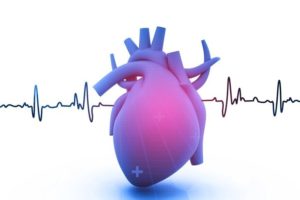


The psychophysiological coherence model draws on dynamical systems theory. This model is grounded in and consistent with research in the fields of neurocardiology, psychophysiology, and neuroscience ( McCraty et al., 2009b). In a broad sense, we call this experience of internal and external intra and interpersonal connectedness “coherence.” Through our research at the HeartMath Institute, we have come to identify a specific physiological state associated with optimal cognitive functioning and emotional stability and introduced the psychophysiological coherence model, briefly outlined below. The quest to understand the mechanisms and dynamics of this sought-after state permeates the scientific and popular literature and gives rise to lines of thought and research that span a number of disciplines. Nevertheless, most people have, at one time or another, likely known a balanced state that is typically characterized by feeling content, happy, in control and in sync within themselves and with others, and irrespective of circumstances and demographic factors, wish to regain this state, and feel good once again. The degree of impairment in self-regulation that often characterizes trauma makes the possibility of a return to a state of wholeness and well-being appear as distant as an elusive memory. For some, the lack of self-regulatory capacity is due to immaturity or skill acquisition while for others it can be due to trauma or impairment in the neural systems that underlie one’s ability to self-regulate. Most would agree that it is a lack of mental and emotional self-regulation that often characterizes stress, anxiety and overwhelm. What does not vary is the fact that trauma often results in a devastating intrusion into a wished for life of peace, calm, and well-being along with a corresponding unexpected and undesired fragmented sense of self and of life in general. The subjective experience of trauma is unique and varies according to the individual and the type of trauma. Without establishing a new baseline reference, people are at risk of getting “stuck” in familiar, yet unhealthy emotional and behavioral patterns and living their lives through the automatic filters of past familiar or traumatic experience. Over time, this establishes a new inner-baseline reference, a type of implicit memory that organizes perception, feelings, and behavior. This shift in the heart rhythm in turn plays an important role in facilitating higher cognitive functions, creating emotional stability and facilitating states of calm.

We discuss the hypothesis that self-induced positive emotions increase the coherence in bodily processes, which is reflected in the pattern of the heart’s rhythm. Our discussion emphasizes the communication pathways between the heart and brain, as well as how these are related to cognitive and emotional function and self-regulatory capacity. These interactions form the basis of information processing networks in which communication between systems occurs through the generation and transmission of rhythms and patterns of activity. In this article we discuss the perspective that one’s ability to self-regulate the quality of feeling and emotion of one’s moment-to-moment experience is intimately tied to our physiology, and the reciprocal interactions among physiological, cognitive, and emotional systems. This can result in high vigilance and over-sensitivity to environmental signals which are reflected in inappropriate emotional responses and autonomic nervous system dynamics. One of the chief symptoms of events such as trauma, that overwhelm our capacities to successfully handle and adapt to them, is a shift in our internal baseline reference such that there ensues a repetitive activation of the traumatic event. The ability to alter one’s emotional responses is central to overall well-being and to effectively meeting the demands of life. 2Department of Psychology, Brenau University, Gainesville, GA, USA.1Institute of HeartMath, Boulder Creek, CA, USA.


 0 kommentar(er)
0 kommentar(er)
